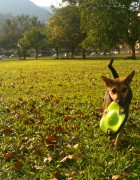Only a while ago i got to know that Malaysian passport holders are not required to produce a Visa when visiting North Korea. That prompted me to wonder how does Malaysia take this country, what is Malaysia’s position on matters regarding the Democratic People’s Republic of Korea (DPRK)?
And if this tourism oriented amiability means anything for the 2 countries, at all?
A very interesting fact that taints this inquiry is that we, the Malaysian soil had in fact hosted 60 visitors from North Korea. From the online sources that scantly mention this, and only in passing – they were not mere tourists; they were 60 artists who came to paint a revolving mural at the Rice Museum located at the foothill of Gunung Keriang, State of Kedah, said Timothy Tye, the painting is really “a massive circular mural measuring 103 metres in circumference, and 8 metres in height” making visitors feels as though they were observing the entire “scene of the surrounding Gunung Keriang region”.
The museum was officiated on October 12, 2004. So the North Koreans were here possibly between early 2001-2004 (What was the time span of the construction exactly?) . Now isn’t that interesting? Considering how some events unfolded in that period:
Year 2000: US-North Korean talks on discontinuing nuclear capabilities in DPRK ended without any agreement. North Korea demanded $ 1 Billion a year in order for them to accede to deactivation. This talk was held in Kuala Lumpur.
Year, 2001, the then President of USA George W. Bush infamously spelled out who in the world were among the “Axis of Evil”, in which North Korea was nicely fitted in.
The Sunshine Policy (1998-2008) initiated by South Korea which made way for steady streams of food aid and possibilities of cooperations in trade was into its 5th year.
And in the early 2003, Japan’s Foreign Affairs office announced during a press conference that they had begun initiating the 6-Party Talks.
The general atmosphere then, for the issue of North Korea was one that is at least hopeful, in the direction of engagement and perhaps an eventual opening up of the country itself.
The North Korean government is not known to encourage intercontinental visitations among even the elites. And here we have 60 people, breathing outside and a very good thousand miles away from the fortress, pushing brushes in this internationally obscure corner called Kedah. What in the world was in Kim Jong-Il and the then PM Tun Mahathir’s mind to have conceived this kind of collaboration? (Who was the then Foreign Minister?) I could only think of this as a very good platform for more interaction, more rubbing shoulders among people of the 2 countries. But why wasn’t there more of these projects? Why wasn’t there more attention from the international community?
I later found out that apparently, it wasn’t only the mural that was painted by North Korean artist, in fact the Rice Museum itself was a construction project undertaken by a North Korean company – the Mansudae Overseas Projects Group (How to verify?). The company also has a facebook page!
Inside North Korea, its local art wing, the Mansudae Art Studio is a massive art establishment housing some 4000 artists most of them graduates of Pyongyang University. various art forms, monuments, propagandist or otherwise are produced by this troop of State sponsored artists. Their overseas commercial arm sends out “batallions” to other countries for construction of sculptures and monuments primarily in Africa, others includes Egypt and of course, our museum there in Kedah. To read more about how Senegal came about engaging North Korea for their “African Renaissance”, here’s something from The Wall Street Journal.
“African Renaissance”
Covered in Minyanville, on being asked why Senegal engaged them, President Abdoulaye Wade gave a very sensible but dodgy answer – that they are the cheapest in the world to engage for projects like these. That the president paid by annexing government owned land as payment was enough to tell how strange the transaction was. And i could only wonder further what the Malaysian government gave in return for the beautiful structure? This worrisome obscurity is also voiced by the AFP :
“Previous work by the North Korean company building major monuments in African countries has been criticised for lack of transparency. Its 49-metre bronze Monument for the African Renaissance has caused outrage in Senegal over the sale of government land to finance the project and the president’s plan to keep 35 per cent of any profit it generates.”
The Rice Museum is built on land belonging to the Malaysian Agriculture Development Authority (MADA). The question for the Malaysian context always comes back to – HOW in the world did the project happen? And most importantly, why did it happen under such heavy burden of silence?
And to put things in a bigger perspective, just a few years back, in 2010, Pahang farmers were bestowed with what technological advances that North Korea had to offer which would enable them paddy fields to yield “seven tonnes of paddy per hectare per season” – as the “AGREEMENT” was mysteriously sealed on a fateful Thursday. What was agreed to be given to the other end was never mentioned. And the decision to consult a country whose agricultural prowess is not sufficient to feed their own people is only going to be more baffling to the thinking public.
So, is it that Malaysia is engaging in the humanitarian act of giving aid to North Korea in the disguise of industrial and cultural exchange? Or is North Korea seeking to bolster its influence in the Southeast Asian countries in the face of their declining diplomatic situation with the US? Or is it, by engaging a problematic contractor, it becomes a very convenient avenue for people on the project to conduct monetary sleight of hand? Or is there more “agreements” happening in the undercurrent that not even the international community has begun to sniff out?


